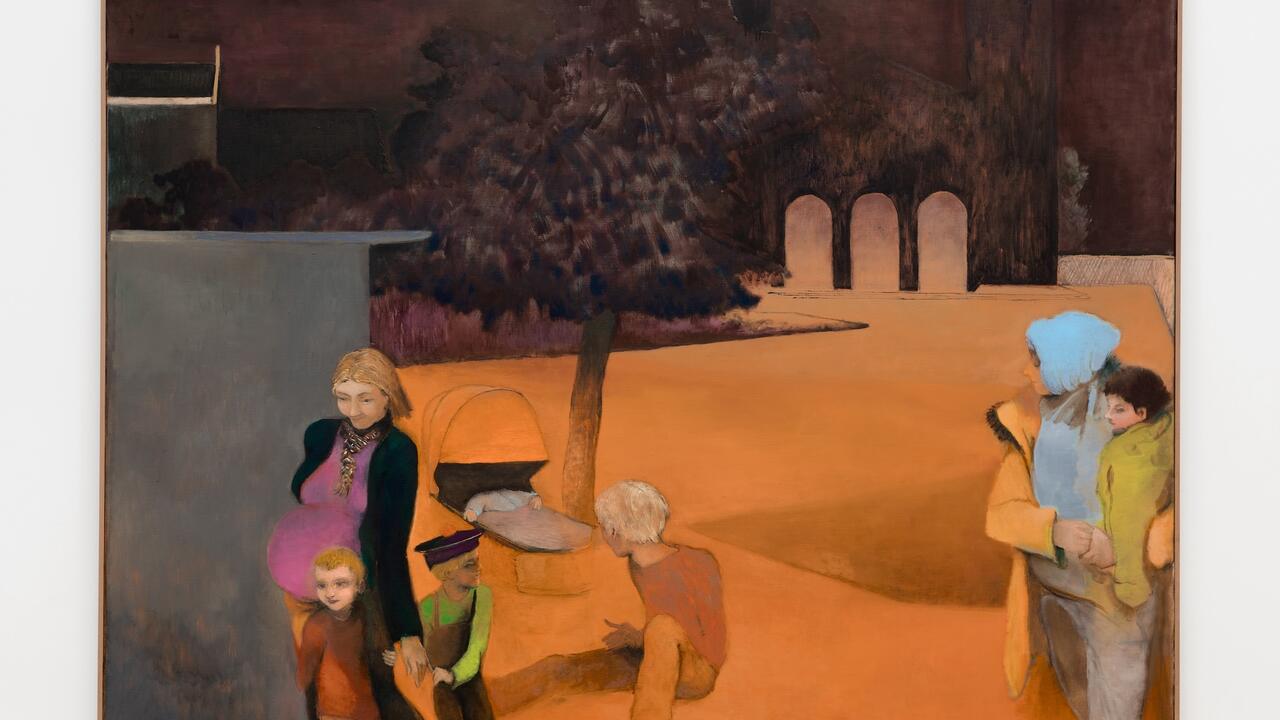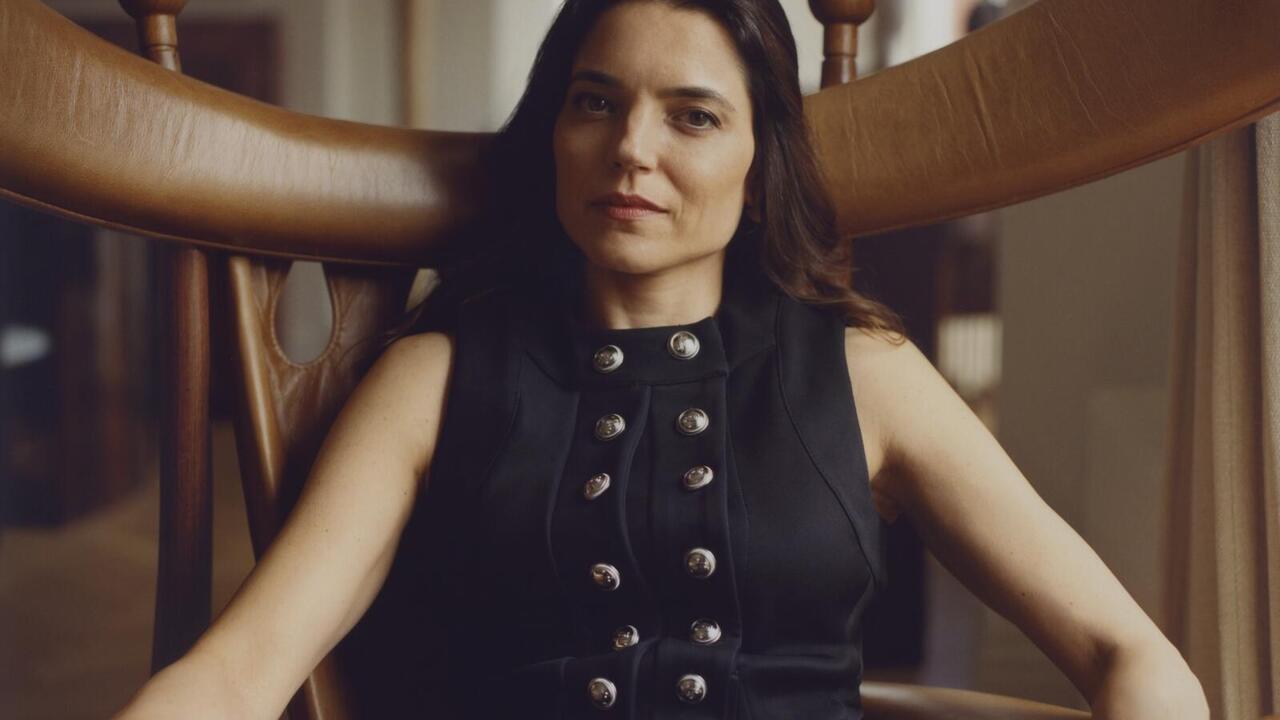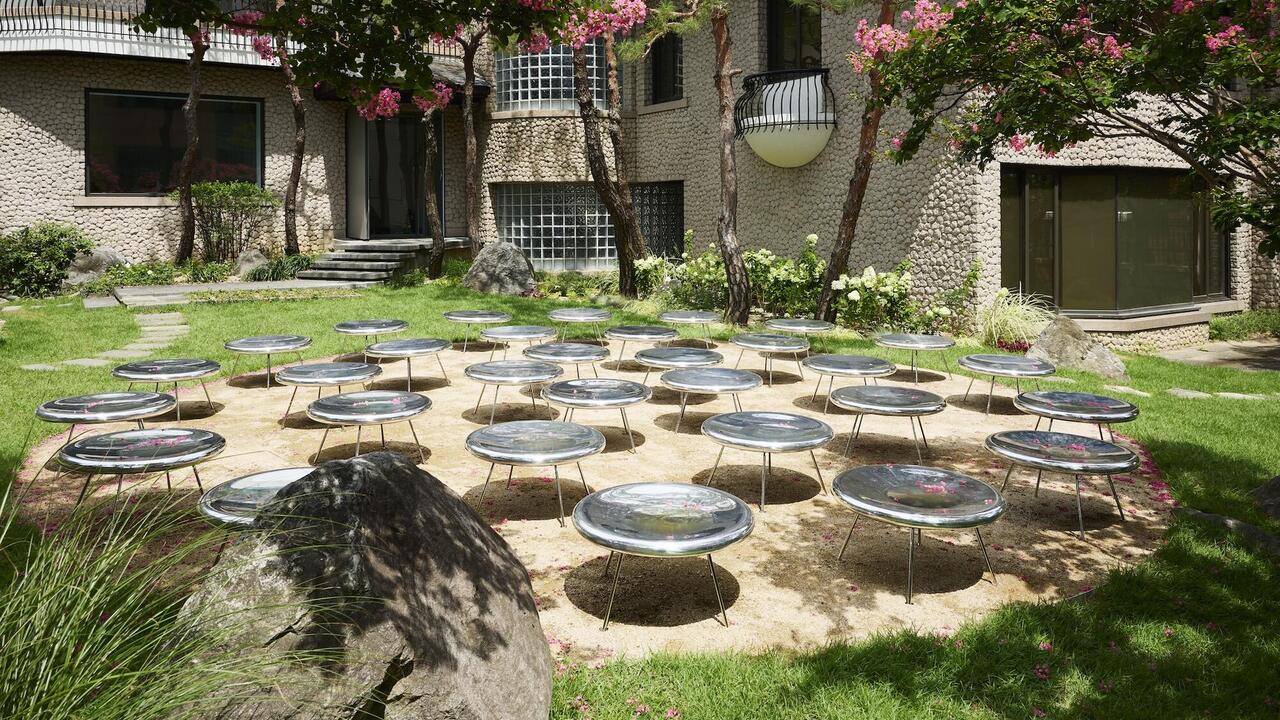The Sound and Feel of Cecilia Vicuña’s Art
Cathy Park Hong, Brenda Lozano and Mónica de la Torre on three iconic works
Cathy Park Hong, Brenda Lozano and Mónica de la Torre on three iconic works

Quipu Viscera

‘Word is thread and the thread is language’, writes Cecilia Vicuña in her poem ‘Word & Thread’ (1996). I thought of the etymology of the word ‘text’ – which comes from texo, Latin for ‘to weave’ – when I stood before Vicuña’s installation of red unspun wool that hung down in strands, threads as thin as those in a cobweb, and thick clumps like a uterus lining shedding during menstruation. Late capitalism prioritizes sight over all other senses, redacting touch, which is the sense needed to collapse distance between self and other, ruining the world’s biodiversity until what is left is its image on a smooth, seamless touchscreen. Vicuña’s Quipu Viscera (2017) rehabilitates touch, returns ‘text’ to its original associations with textile and texture. She is inspired by ancient Incans and Andeans who created quipus, series of knotted cords that recorded numerical information, poems and stories before the Spanish colonizers destroyed and then banned their making, because they could not decipher the language and therefore regarded it as a threat. Vicuña’s installations resurrect the lost language of her indigenous ancestors while simultaneously telegraphing that this language can never be recovered because their meanings have been erased. Her quipus are sustainable, anti-monumental and irreducible responses to contemporary ecological destruction, offering a spiritual and sensuous vision of a different kind of future.
– Cathy Park Hong
Quipu Menstrual

There was a time when writing was possible. The first writing was done by a woman who had been turned by Zeus into a cow, back when writing a lament in the earth with a hoof was possible. There was a time when reading was possible. The first reading was done of the stars in the night sky, back when reading what the stars told was possible. There was a time when writing messages in code was possible. The first message written in code was a cloth woven by a kidnapped woman asking for help, back when writing messages in code was possible. There was a time when telling stories was possible. A time when writing stories in code was possible. The ancient Inca told stories and wrote them in code as quipus – a series of cords painted in different colours, with knots tied in different places, back when writing with cloth and cords encoded with stories was possible. There was a time when telling stories and writing them as a woman in a man’s world was possible. There was a time when being a female artist in an art world that favoured permanency was possible. There was a time when being a female artist and making ephemeral work was possible. A time when being a female artist and making ephemeral work that addressed women’s issues and was seen around the world was possible. There was a time when being a Latin American woman who made ephemeral art that was seen around the world was possible. In an older, more primitive version of the world, everything was interconnected. The Earth, the stars, words and people were connected. And, once, a female Latin American artist made a menstrual quipu to remind us that there was a time when everything was possible for the first time.
– Brenda Lozano, translated from Spanish by Heather Cleary
Corazón con razón

At the core of almost any word are other words. Words nesting inside other words. The words’ pasts and their latent futures. Cecilia Vicuña’s art is a poetics weaving together words and images so indivisibly as to dissolve the spurious borders between language and media. Instan (2002), her book of pencil drawings and multilingual poems, contains the inscription ‘entwine the betwixt’. The phrase encapsulates Vicuña’s ars poetica. Her imagination, equally iconoclastic and visionary, breaks things apart in order to rearrange and fuse those parts with the parts of other things lovingly broken apart. The rebus Con razón is from Palabrarmas, a series of visual poems that Vicuña began in 1966, whose title is a portmanteau of the Spanish words palabra (words) and arma (weapon, but also a conjugation of ‘to assemble’). ‘Arm yourself with words’ is one possible meaning; ‘assemble new words’ is another. The words labra (till) and abra (open) within Palabrarmas also suggest working the language to multiply its possibilities. The idiomatic expression con razón roughly translates as ‘rightly so’ or ‘with good reason’. The heart’s reasons are always right: to love is to be con, to be fully with. That is always reasonable.
– Mónica de la Torre
‘The Sound and Feel of Cecilia Vicuña’s Art’ first appeared in frieze issue 229 as part of the festschrift ‘I Am Green: An homage to Cecilia Vicuña’, alongside ‘Cecilia Vicuña’s Poetry Challenges ‘Authoritarian Monolingualism’’, ‘‘A Form of Praying’: The Performances of Cecilia Vicuña’ and her poem ‘Silence is in ruins’.
‘Hyundai Commission: Cecilia Vicuña’ will be on view in the Turbine Hall of Tate Modern, London from 11 October 2022 to 16 April 2023.
Main image: Cecilia Vicuña, Quipu Menstrual, 2006, installation view, El Plomo Glacier, Chile. Courtesy: the artist and New York / Hong Kong / Seoul / London




















